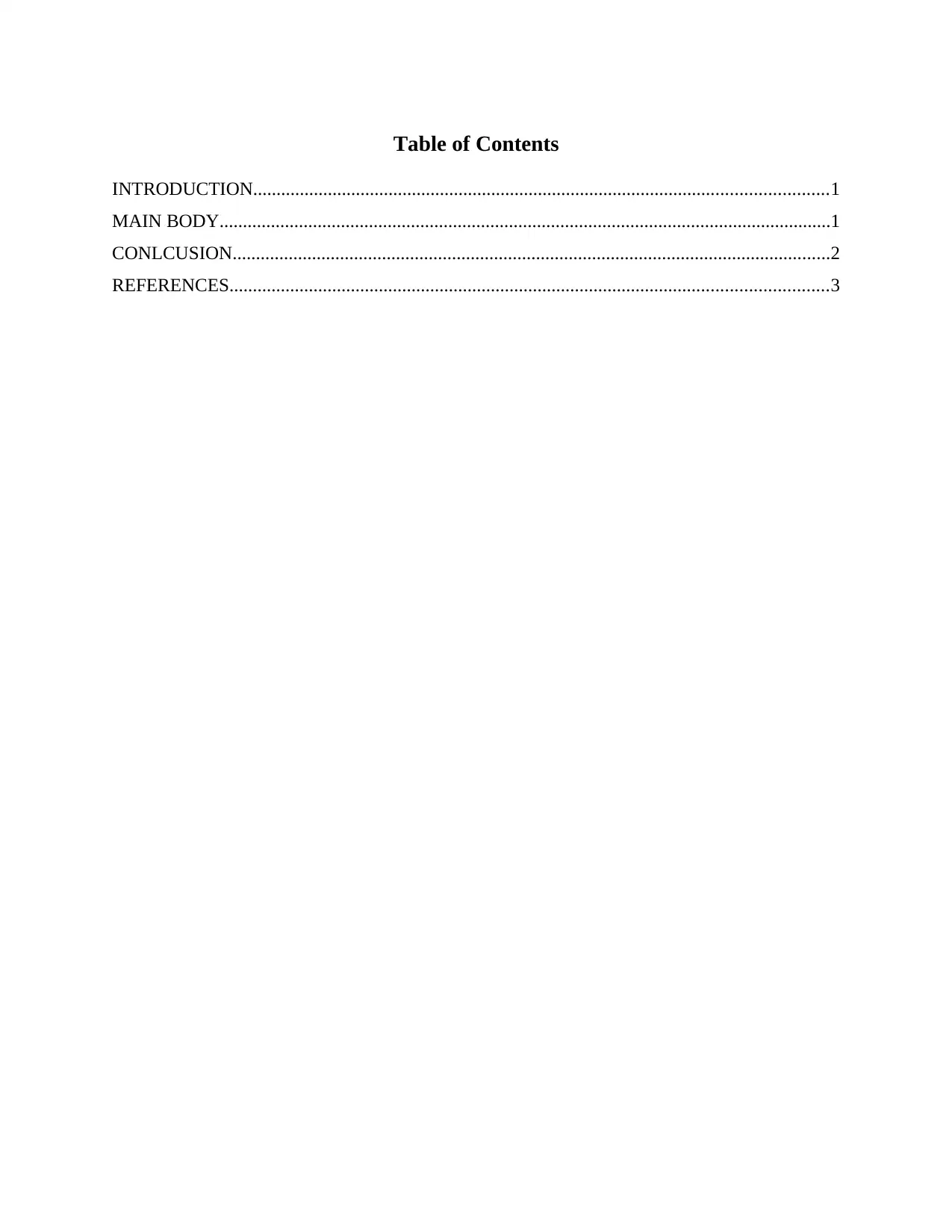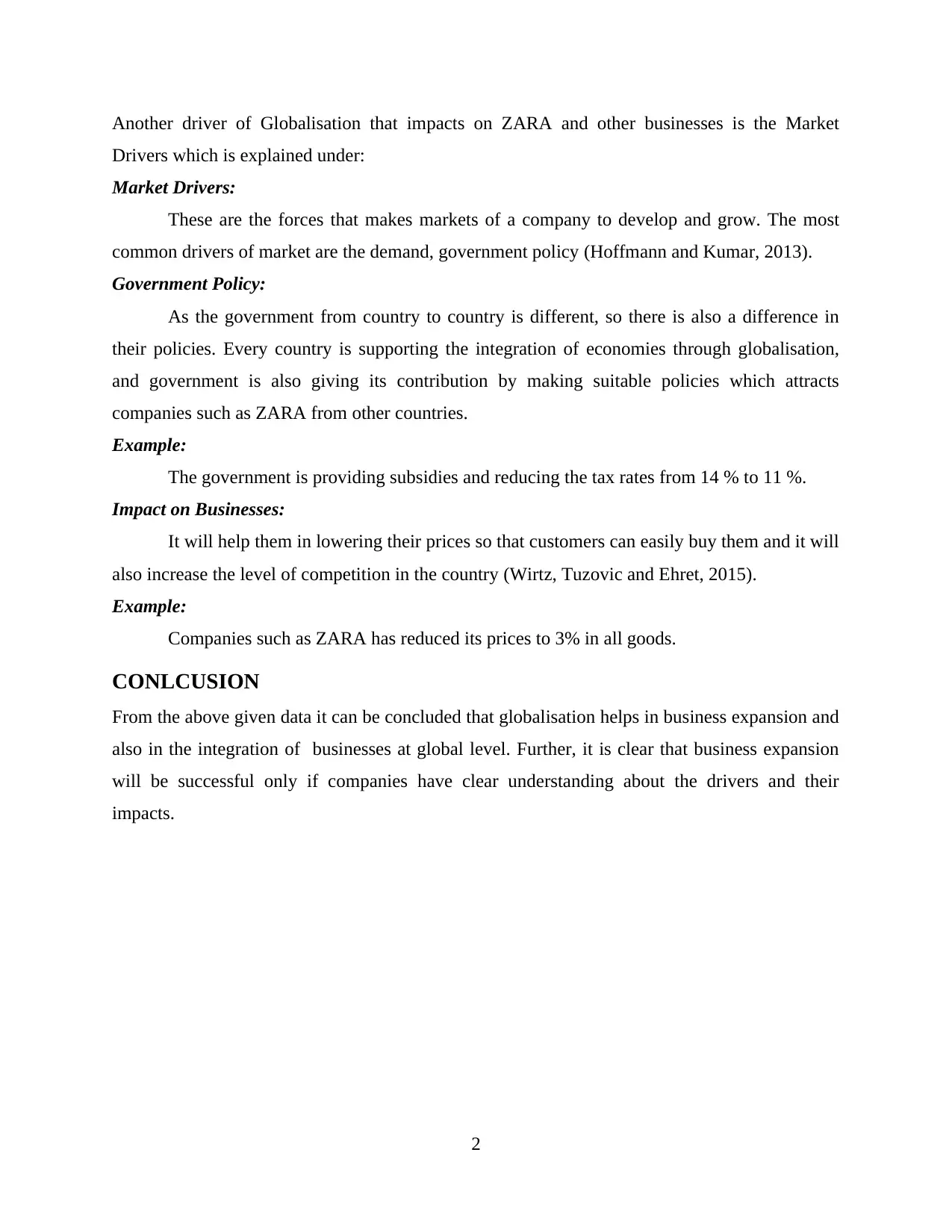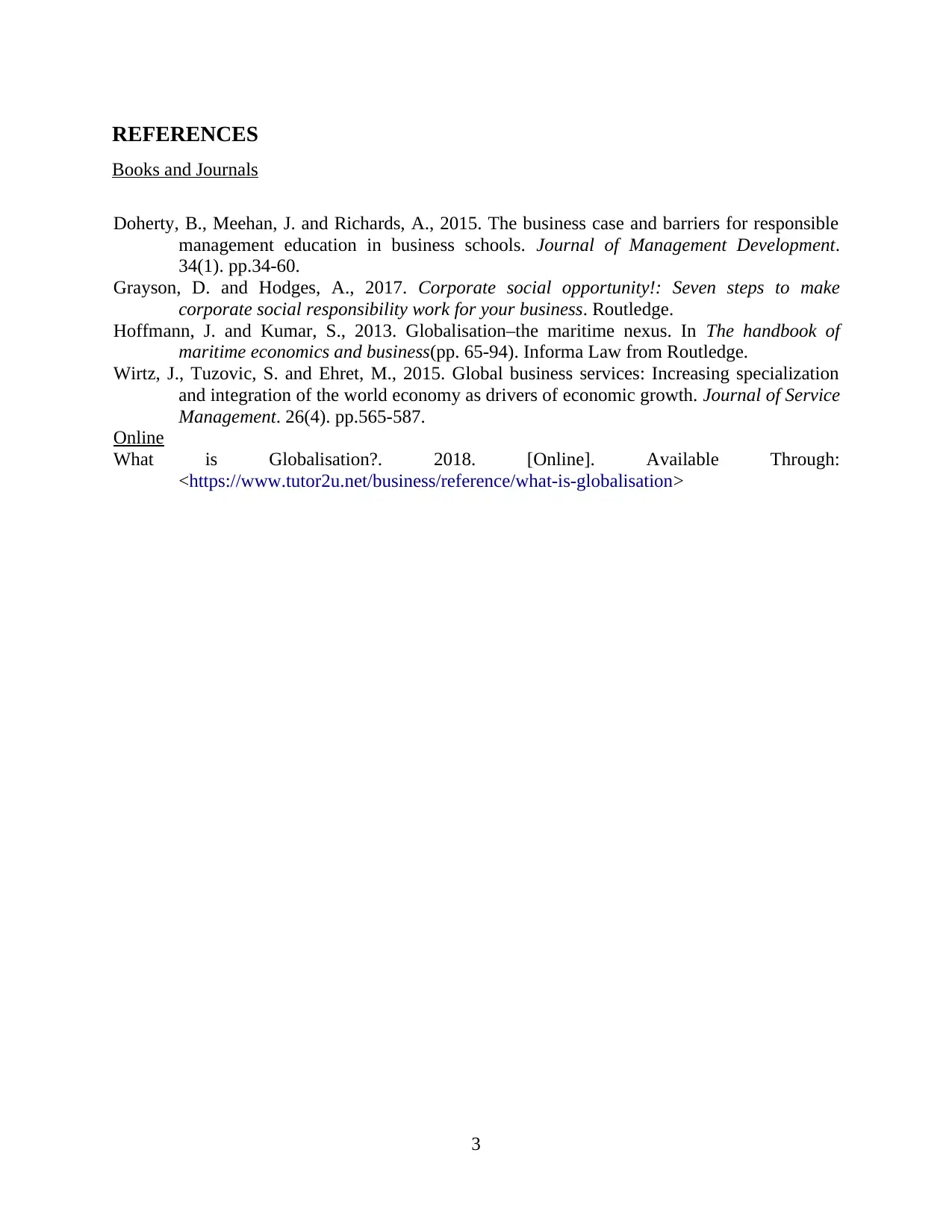Business Report: Globalisation's Impact, Drivers, and Market Analysis
VerifiedAdded on 2020/10/05
|5
|781
|263
Report
AI Summary
This report analyzes the impact of globalisation on business operations, focusing on the drivers that shape this impact. It explores the influence of cost drivers, particularly economies of scale, and how they enable businesses to reduce production costs and offer competitive prices, using ZARA as an example. The report also examines market drivers, such as government policies that facilitate market growth and integration, again using ZARA as a case study. It concludes that a clear understanding of these drivers is crucial for successful business expansion in a globalized environment. The report uses examples from the fashion industry to illustrate key concepts and provides references to academic sources for further study.

Report
Paraphrase This Document
Need a fresh take? Get an instant paraphrase of this document with our AI Paraphraser

Table of Contents
INTRODUCTION...........................................................................................................................1
MAIN BODY...................................................................................................................................1
CONLCUSION................................................................................................................................2
REFERENCES................................................................................................................................3
INTRODUCTION...........................................................................................................................1
MAIN BODY...................................................................................................................................1
CONLCUSION................................................................................................................................2
REFERENCES................................................................................................................................3

INTRODUCTION
Globalisation can be defined as the integration and interaction of different economies,
countries and people of different countries such as for trade (What is Globalisation?, 2018). The
following report will focus on the impact of globalisation on the working of a business and
collectively on the businesses as a whole. In this report, an understanding is created about the
impact of drivers of globalisation on the businesses.
MAIN BODY
The drivers of globalisation are the technological drivers, political drivers, market
drivers, cost drivers, and the competitive drivers (Doherty, Meehan and Richards, 2015). Below
is explained about the factor covered under cost driver of globalisation ,i.e., Economies of Large
Scale. The discussion of this drivers is shown a under:
Cost Drivers:
These are the drivers which decreases the cost of production of a company such as by
building economies of large scale which is explained under:
Economies of Large Scale:
This factor is also covered under Pull Factors and the Yip Model. It can be defined as the
cost advantage for a company which it enjoys only when it operates at a large scale or by
expanding its scale of production.
Example:
For example, the prices of products of ZARA will be reduced and they will be available
to customers at a lower price from £50 to £37 per unit.
Impact on Businesses:
Companies can expand their business at globalised level and with the help of this driver it can
reduce its cost of production. Another benefit of this driver is that companies will be able to
provide its products at cheaper prices (Grayson and Hodges, 2017). It will help in increasing the
market share of the company and even its profitability.
Example:
As from the profitability context, the profit margins of ZARA also increased from £7 to
10 in almost all products. In this way, economies of scale impacts upon the profitability level of
ZARA.
1
Globalisation can be defined as the integration and interaction of different economies,
countries and people of different countries such as for trade (What is Globalisation?, 2018). The
following report will focus on the impact of globalisation on the working of a business and
collectively on the businesses as a whole. In this report, an understanding is created about the
impact of drivers of globalisation on the businesses.
MAIN BODY
The drivers of globalisation are the technological drivers, political drivers, market
drivers, cost drivers, and the competitive drivers (Doherty, Meehan and Richards, 2015). Below
is explained about the factor covered under cost driver of globalisation ,i.e., Economies of Large
Scale. The discussion of this drivers is shown a under:
Cost Drivers:
These are the drivers which decreases the cost of production of a company such as by
building economies of large scale which is explained under:
Economies of Large Scale:
This factor is also covered under Pull Factors and the Yip Model. It can be defined as the
cost advantage for a company which it enjoys only when it operates at a large scale or by
expanding its scale of production.
Example:
For example, the prices of products of ZARA will be reduced and they will be available
to customers at a lower price from £50 to £37 per unit.
Impact on Businesses:
Companies can expand their business at globalised level and with the help of this driver it can
reduce its cost of production. Another benefit of this driver is that companies will be able to
provide its products at cheaper prices (Grayson and Hodges, 2017). It will help in increasing the
market share of the company and even its profitability.
Example:
As from the profitability context, the profit margins of ZARA also increased from £7 to
10 in almost all products. In this way, economies of scale impacts upon the profitability level of
ZARA.
1
⊘ This is a preview!⊘
Do you want full access?
Subscribe today to unlock all pages.

Trusted by 1+ million students worldwide

Another driver of Globalisation that impacts on ZARA and other businesses is the Market
Drivers which is explained under:
Market Drivers:
These are the forces that makes markets of a company to develop and grow. The most
common drivers of market are the demand, government policy (Hoffmann and Kumar, 2013).
Government Policy:
As the government from country to country is different, so there is also a difference in
their policies. Every country is supporting the integration of economies through globalisation,
and government is also giving its contribution by making suitable policies which attracts
companies such as ZARA from other countries.
Example:
The government is providing subsidies and reducing the tax rates from 14 % to 11 %.
Impact on Businesses:
It will help them in lowering their prices so that customers can easily buy them and it will
also increase the level of competition in the country (Wirtz, Tuzovic and Ehret, 2015).
Example:
Companies such as ZARA has reduced its prices to 3% in all goods.
CONLCUSION
From the above given data it can be concluded that globalisation helps in business expansion and
also in the integration of businesses at global level. Further, it is clear that business expansion
will be successful only if companies have clear understanding about the drivers and their
impacts.
2
Drivers which is explained under:
Market Drivers:
These are the forces that makes markets of a company to develop and grow. The most
common drivers of market are the demand, government policy (Hoffmann and Kumar, 2013).
Government Policy:
As the government from country to country is different, so there is also a difference in
their policies. Every country is supporting the integration of economies through globalisation,
and government is also giving its contribution by making suitable policies which attracts
companies such as ZARA from other countries.
Example:
The government is providing subsidies and reducing the tax rates from 14 % to 11 %.
Impact on Businesses:
It will help them in lowering their prices so that customers can easily buy them and it will
also increase the level of competition in the country (Wirtz, Tuzovic and Ehret, 2015).
Example:
Companies such as ZARA has reduced its prices to 3% in all goods.
CONLCUSION
From the above given data it can be concluded that globalisation helps in business expansion and
also in the integration of businesses at global level. Further, it is clear that business expansion
will be successful only if companies have clear understanding about the drivers and their
impacts.
2
Paraphrase This Document
Need a fresh take? Get an instant paraphrase of this document with our AI Paraphraser

REFERENCES
Books and Journals
Doherty, B., Meehan, J. and Richards, A., 2015. The business case and barriers for responsible
management education in business schools. Journal of Management Development.
34(1). pp.34-60.
Grayson, D. and Hodges, A., 2017. Corporate social opportunity!: Seven steps to make
corporate social responsibility work for your business. Routledge.
Hoffmann, J. and Kumar, S., 2013. Globalisation–the maritime nexus. In The handbook of
maritime economics and business(pp. 65-94). Informa Law from Routledge.
Wirtz, J., Tuzovic, S. and Ehret, M., 2015. Global business services: Increasing specialization
and integration of the world economy as drivers of economic growth. Journal of Service
Management. 26(4). pp.565-587.
Online
What is Globalisation?. 2018. [Online]. Available Through:
<https://www.tutor2u.net/business/reference/what-is-globalisation>
3
Books and Journals
Doherty, B., Meehan, J. and Richards, A., 2015. The business case and barriers for responsible
management education in business schools. Journal of Management Development.
34(1). pp.34-60.
Grayson, D. and Hodges, A., 2017. Corporate social opportunity!: Seven steps to make
corporate social responsibility work for your business. Routledge.
Hoffmann, J. and Kumar, S., 2013. Globalisation–the maritime nexus. In The handbook of
maritime economics and business(pp. 65-94). Informa Law from Routledge.
Wirtz, J., Tuzovic, S. and Ehret, M., 2015. Global business services: Increasing specialization
and integration of the world economy as drivers of economic growth. Journal of Service
Management. 26(4). pp.565-587.
Online
What is Globalisation?. 2018. [Online]. Available Through:
<https://www.tutor2u.net/business/reference/what-is-globalisation>
3
1 out of 5
Related Documents
Your All-in-One AI-Powered Toolkit for Academic Success.
+13062052269
info@desklib.com
Available 24*7 on WhatsApp / Email
![[object Object]](/_next/static/media/star-bottom.7253800d.svg)
Unlock your academic potential
Copyright © 2020–2025 A2Z Services. All Rights Reserved. Developed and managed by ZUCOL.




